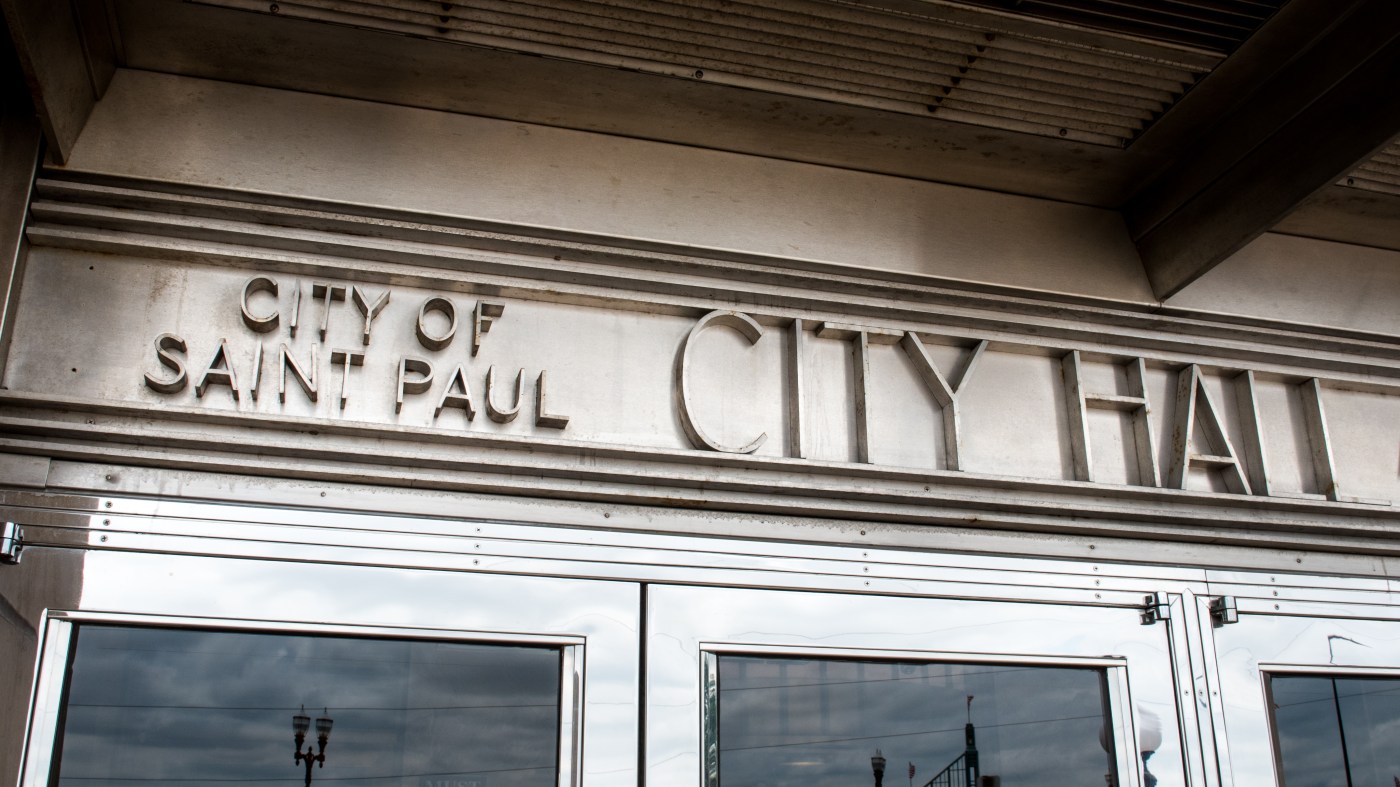
St. Paul: Beacon Interfaith seeks to build 53 affordable housing units across from St. Pascal Baylon on White Bear Avenue
When residents living near White Bear Avenue gathered this week at St. Pascal Baylon Catholic Church to discuss the 53-unit affordable housing complex planned for the church-owned lot across the street, few opened their questions with comments about the zoning changes necessary to support the Aragon, Beacon Interfaith Housing Collaborative’s proposed “workforce housing” complex.
Instead, they peppered presenters with concerns about Kimball Court, another Beacon Interfaith development located well across the city toward Snelling and University avenues.
Jim Barnes, Beacon Interfaith’s housing development project manager for the Aragon, attempted to assure the crowd of about 30 residents gathered Tuesday evening that the two residential buildings are distinct in fundamental ways.
Kimball Court, a 76-unit dormitory style housing structure, has been managed in recent years under a “housing first” model that prioritizes finding hard-to-place homeless residents a roof and bed before offering them support services to help with addictions and other behaviors.
Many Hamline-Midway homeowners have said Beacon Interfaith’s well-intentioned efforts have come at a cost to their own quality of life, as residents and visitors have contributed to a significant uptick in litter, loitering, break-ins, shoplifting and open-air, daytime drug dealing.
‘Workforce housing’
The four-story Aragon, in contrast, will offer family “workforce” housing for low-to-moderate income workers, spanning a mix of one-bedroom, two-bedroom, three-bedroom and four-bedroom units, mostly geared toward households earning no more than 50% to 60% of area median income, which is a household income limit of about $62,000 to $75,000. No more than 13 to 16 supportive housing units will be set aside for residents who have a history of homelessness.
Criminal history screening will be more stringent given that many units will house children.
“This is not a ‘housing first model,’” Barnes said. “This is going to be geared toward families. When we have a development that has children in it, that heightens that safety element in my mind. … In the city’s comprehensive plan, they want bigger units for families.”
The audience appeared largely unconvinced. Some expressed concerns about parking and housing density, but most present steered their comments back to recent newspaper and television reports about drug dealing, crime and other illicit behaviors outside Kimball Court, which is poised for a $19 million, publicly-funded expansion.
”The number of units. The clientele. These guys aren’t known for bringing in the best clientele,” said David Jasinski, who has lived in the area for 65 years and went to school at St. Pascal Baylon as a child.
Rezoning necessary
Beacon Interfaith owns and operates 24 affordable housing complexes serving 1,000 residents in St. Paul, Minneapolis, Edina, Hopkins and elsewhere, using a variety of housing models.
On Wednesday, the St. Paul City Council is scheduled to host a public hearing on St. Pascal Baylon’s attempts to use a conditional use permit to rezone the empty church lot at 470 White Bear Ave. N. for medium-density, multiple family residential construction up to 50 feet in height, known as RM2 zoning. The land is currently zoned H2 residential, which allows a maximum building height of 39 feet.
The St. Paul Planning Commission has supported the rezoning effort, as have city planning staff and the Southeast Community Organization, a neighborhood district council.
“We recognize that our neighborhood, like every neighborhood in the city, is lacking in the amount of housing that is affordable to people,” wrote John Slade, president of the district council, in a letter to the Planning Commission this summer. “We are pleased to see multi-bedroom units planned, which will serve larger families. We are also glad to see a development near an intersection with good transit.”
Among the many letters of opposition submitted to the city council, White Bear Avenue resident Lori Jones noted “gang division lines” running along Third Street and White Bear Avenue.
“Adding this complex into a small area where there is already crime would not benefit the renters for their safety,” she wrote. “Please do not rezone this location. Currently there are so many apartments in the neighborhood now on Wilson Street, Old Hudson Road, and Suburban (Avenue), there is no need to have this rezoned or developed into multi-(unit) housing.”
Residents questioned whether the rezoning would constitute “spot zoning” — an island of zoning use inconsistent with the surrounding area — which is illegal in Minnesota. In a staff report, city planning staff noted that much of the surrounding area is zoned H2, with permitted uses that largely overlap with RM2 zoning, and “the proposed zoning is consistent with the mix of uses and intensities found along (the) White Bear Avenue corridor.”
Related Articles
US inflation rose slightly last month after 2 years of steady cooling but remained low
Patrick Tuohey: Rent control and financial assistance fail to address housing supply crisis
Wisconsin appeals court reverses lower court’s ruling, Osceola apartment plan can proceed
St. Paul Board of Zoning Appeals denies variances for Grand Avenue apartment building
St. Paul ‘Familiar Faces’ housing effort on Marshall Avenue faces Nov. 21 vote


